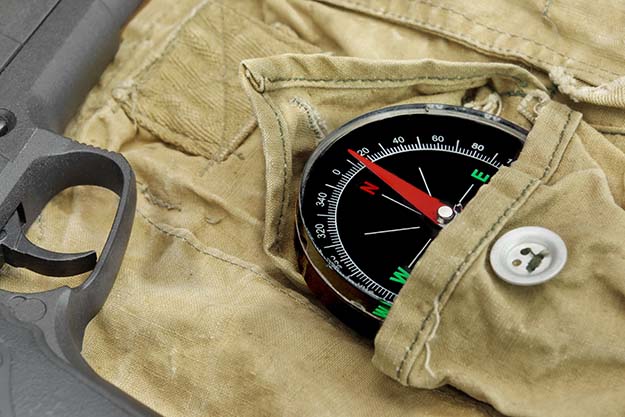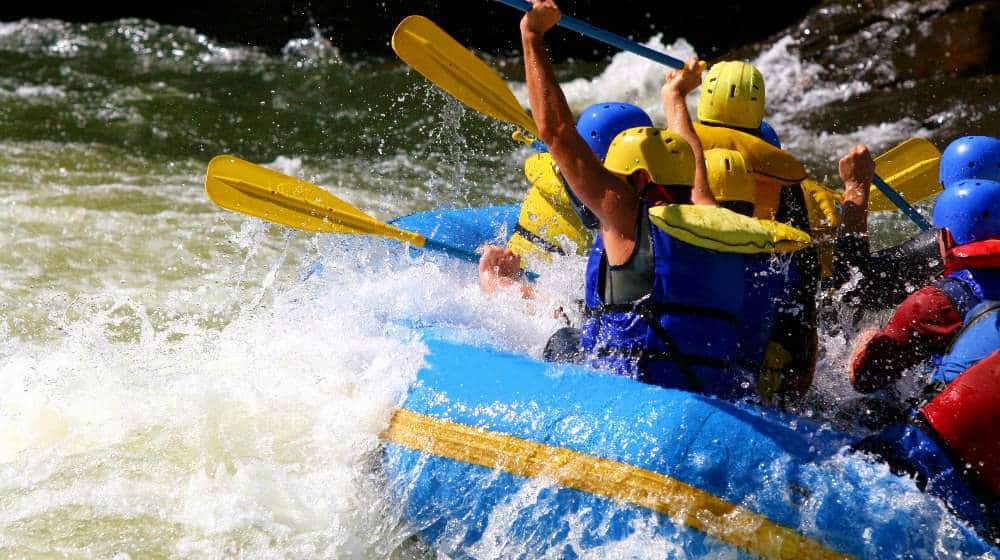Preparedness
10 Disaster Preparedness Tips You Can Really Use

1. Know what you’ll face
Part of preparation is knowing exactly what kind of disasters you might face and knowing what to do in each situation. Living in Montana? You probably don’t need to worry about hurricanes. California? Better be ready for an earthquake, but don’t overlook your chances of severe weather or pandemic flu. If you can’t think of all the possibilities, here’s a handy list from the Red Cross. If you think you live in a disaster-free zone, you’re probably wrong.
2. Learn your area’s evacuation routes and shelter locations
The time to figure these things out isn’t while a hurricane is bearing down on your home, or after a tsunami warning has been issued. Evacuations are actually pretty common, so it will serve you well to know the details ahead of time. You should also know the escape routes from your own home, including the more obscure ones, like out that ground-level window in your bathroom. If you have kids, draw them a map and post it near their door. You should also plan where your family will regroup if you must evacuate your house. Pick one location right outside your home, and one outside the neighborhood, in case you must leave the area. Decide ahead of time where you would go in case of an evacuation, whether its a friend’s or relative’s house or a Red Cross shelter.
3. Know how you’ll reconnect with people who matter
If cell networks aren’t working, you don’t just need to worry about how your Netflix stream will be affected. Consider how you will contact your family or your roommates. How will you let others know you are alright? Figuring this out ahead of time can make everything so much easier in a difficult situation. The Red Cross recommends using an out-of-area emergency contact to have family members check in with, since it may be easier to make long distance calls. Everyone should also have a list of emergency contacts and local emergency numbers.
4. Sign up for emergency alerts and know how officials will communicate with you during a disaster
You can get these on your cell phone, if you haven’t disabled them already. We know the blaring noise overtaking the silent mode on your phone can be annoying, but this is probably the best way to learn about emergencies if you are constantly attached to your phone. The emergency alert system also broadcasts over the radio and television, and NOAA weather radio can tell you if severe weather is expected 24 hours a day, seven days a week. Tune in on social media as well, but don’t expect to rely on it exclusively as you may not keep your Internet connection in an emergency.
SPECIAL: If you really want to be prepared, you need the ultimate EDT. Click here!
5. Learn what to do if you’re caught away from home
Obviously you may not be at home when disaster strikes. In the case of an unexpected emergency, you should be prepared to react from different locations, including your workplace or car. Most of this is pretty basic stuff — again, know your evacuation routes, communication plan and how you’ll receive emergency notification. Have a plan for reconnecting with kids who may be at school, daycare or after-school activities. Talk to schools to see how they will communicate with families in an emergency, if they have a shelter-in-place plan and where they will go if they are forced to evacuate.
6. Have a kit and know how to use it
Ok, we’re not talking full-on doomsday prepper status here. We’re talking about some basic necessities. This includes food, water, basic first aid supplies and other emergency equipment that you might already have (think flashlights and duct tape). Check out this full list by FEMA for tips. The key is to have this assembled and ready to use, not scattered all over your house. Make sure everything is in working order and that no one sneaks snacks from your finished kit. Some kits are available for purchase pre-packed, but remember, if you don’t know how to use what you have, it could be useless.
7. Keep in mind people who may need special preparation
Kids, infants, people with disabilities and seniors may all need special considerations while planning for an emergency. If you or a family member need medication or special equipment, make sure you have a plan to bring it with you. Talk to your neighbors about how you can help one another in a disaster, and check on each other in case of an emergency.
8. Prepare for your pets
The goal of emergency preparedness is to keep the whole family safe — and that includes our pets. If you need to evacuate, you should never leave your pet behind. Try to evacuate to a friend or family member’s house, as pets may not be allowed inside public shelters. Keep a pet emergency kit on hand with food and other important items. The ASPCA recommends microchipping pets so they can be identified and returned to you even without tags (or you may want to invest in a GPS tracker so you can find them yourself). The ASPCA app also helps you keep track of animal records required to board pets at an emergency shelter and has other helpful tips for a variety of situations.
9. Learn emergency skills that can always come in handy
Make sure you know little things that can make a huge difference, like how to use a fire extinguisher or perform basic first aid. Get trained in CPR or the even simpler hands-only CPR, which could help save someone’s life even when you least expect it. You can also learn how to shut off utilities in your house in case of a disaster that may damage gas, water or electrical lines.
10. Find out how to help your community during a disaster
Want to help out even more? Learn how you can be a community leader during a disaster or teach others how to be prepared. Volunteer positions with local emergency response agencies or nonprofits are available in a huge range of capacities.
This is not a catch-all list. For more information visit ready.gov, redcross.org or your local emergency preparedness site.
Read the original article here.
You can also check out related articles from our site:
Tornado Survival Tips: How to Survive Natural Disasters
-

 Do It Yourself7 months ago
Do It Yourself7 months agoParacord Projects | 36 Cool Paracord Ideas For Your Paracord Survival Projects
-

 Do It Yourself9 months ago
Do It Yourself9 months agoHow To Make Paracord Survival Bracelets | DIY Survival Prepping
-

 Do It Yourself9 months ago
Do It Yourself9 months ago21 Home Remedies For Toothache Pain Relief
-

 Do It Yourself10 months ago
Do It Yourself10 months agoSurvival DIY: How To Melt Aluminum Cans For Casting
-

 Exports8 months ago
Exports8 months agoAre Switchblades Legal? Knife Laws By State









Pingback: Japan ready to share 3/11 disaster lessons | Survival Life
Pingback: What Would Happen If An Asteroid Actually Hit Earth? | Survival Life
Pingback: Flood Survival Tips | How to Survive Natural Disasters
Pingback: Wilderness Survival Guide: Outdoor Toilet Paper Alternatives - Survive!
Pingback: Wilderness Survival Guide: Outdoor Toilet Paper Alternatives - Survival Patch
Pingback: Wilderness Survival Guide: Outdoor Toilet Paper Alternatives | Life Off The Grid
Pingback: Paracord Bracelets | 10 Ways on How to Use Them to Save Your Life
Pingback: Top 10 Reasons To Never Leave Home Without A Paracord Bracelet – Ultimate Survival Alerts
Pingback: Wilderness Survival Guide: Outdoor Toilet Paper Alternatives | Survival Life
Pingback: Disaster Hot Spots That Will Get You Killed – Ultimate Survival Alerts
Pingback: Heart Attack Signs You Should Know To Survive When You Are Alone
Pingback: Heart Attack Signs You Should Know To Survive When You Are Alone | Primitive technology
Pingback: Heart Attack Signs You Should Know To Survive When You Are Alone – Ultimate Survival Alerts
Pingback: Disaster Hot Spots That Will Get You Killed | Survival Life